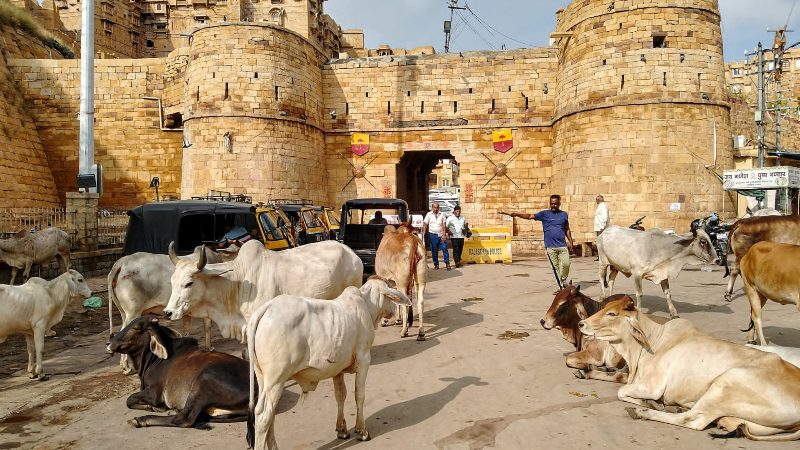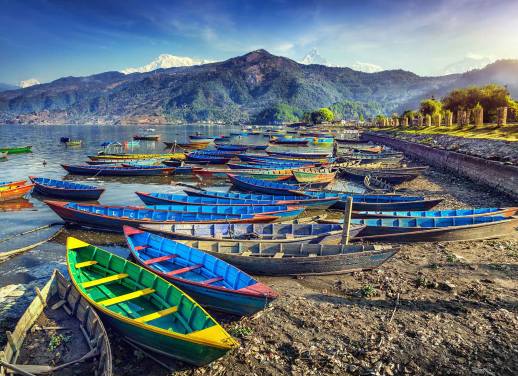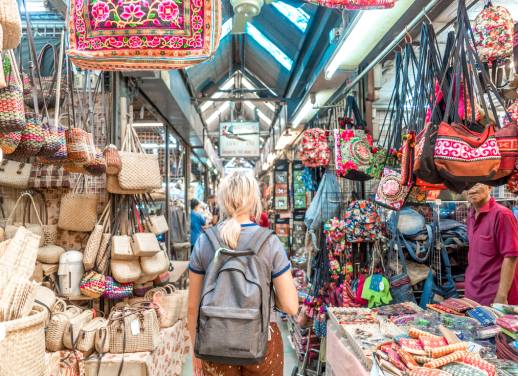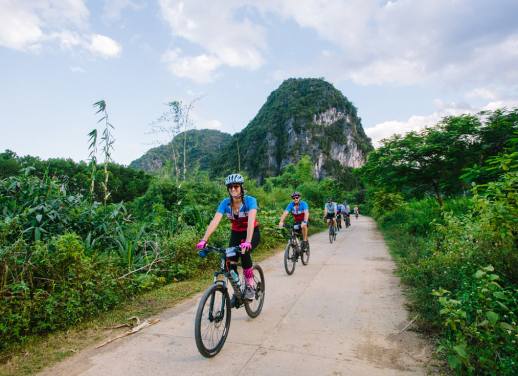Every single city in India is magnificent, so believe me when I say it was hard to narrow it down to just five.
As a child, I was fascinated by Bollywood movies full of colour and passion, thanks to a best friend’s love of the genre (and my love for all things drama). As a teenager, getting a rich, tomato-y butter chicken with (extra) garlic naan was always my go-to takeaway. Now, as an adult, I can’t get over the transcendent story of love behind the creation of the Taj Mahal – spoiler alert, I still can’t. So, when deciding which country to visit on my annual trip, India was a no-brainer.
India has been on my must-visit list for a while, however, the thought of travelling there was a little overwhelming. I wanted to go, but I didn’t really know how. Could I brave the language barrier and cultural differences and explore the country on my own? Or would I need a local guide to show me where to buy the creamiest lassi and how to avoid getting kicked by a curb-side cow?
I went with the latter on Intrepid’s 15-day Rajasthan Experience tour. It was still overwhelming, but these five cities made me appreciate this kaleidoscopic country in a whole different way and if it were up to me (it’s clearly not), no one would travel to India without visiting them.
*Disclaimer, I know not all of the cities I’ve listed are technically in the state of Rajasthan, but we still visited them as part of the Rajasthan Experience tour, so I’ve included them in this blog anyway.
Delhi
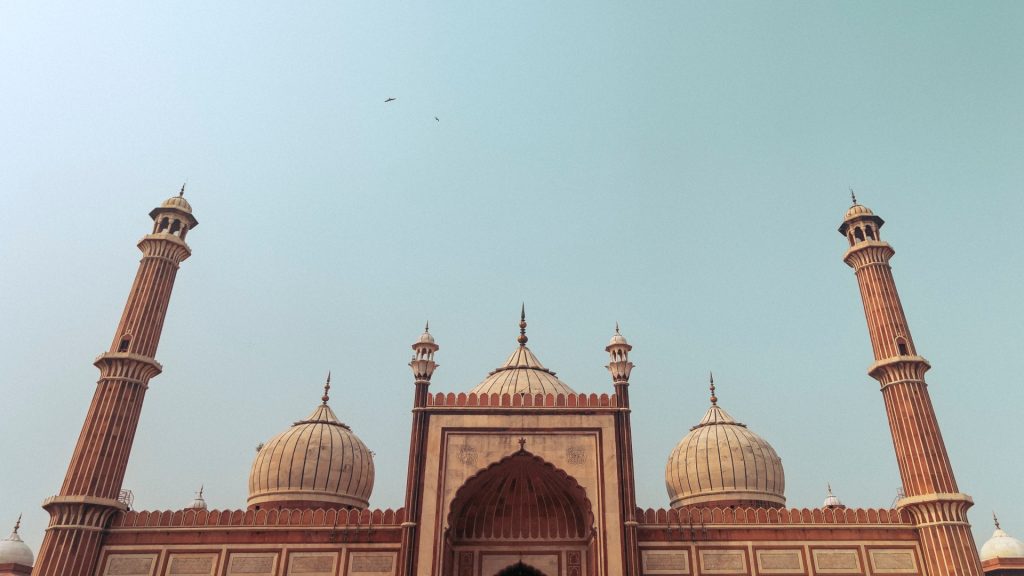
You can read all the travel guides and do hours of research, but nothing prepares you for the sensory overload of Delhi. Home to nearly 33 million people, this city pulsates all around you with sights, tastebud-tingling smells and noises so loud and constant that you start to wonder whether you’ll ever experience peace and quiet again.
Delhi was the meeting point for the start of the adventure, so there were no tour activities included, but I had some time to explore the city before the welcome meeting. Now Delhi is etched in my mind as the place where I dived into India’s culture, headfirst.
From the marble domes and towering minarets of Jama Masjid to the frenzied Khari Baoli market street where turmeric, cumin and powdered red chilli rub shoulders with cashews and peanuts in bags by the kilo, it was the perfect place to get my feet wet – literally. A few Hindu temples in Delhi required us to remove our shoes and place our feet in a trough full of marigold-infused water as a sign of respect, cleanliness and humility before we could enter.
We only spent one night in Delhi, but that was all it took to get me excited. Yes, I was still feeling apprehensive, but my nervousness was slowly and surely being replaced by anticipation of the coming adventure.
Agra
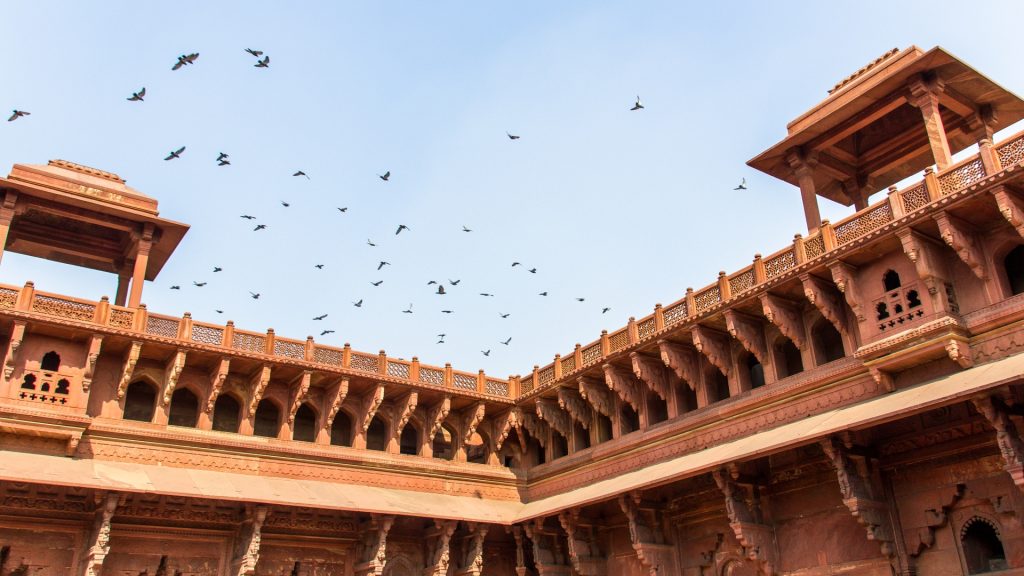
After a brief, air-conditioned train ride (that’s important when temperatures of 35˚C+ are expected), we arrived in Agra. I was ready to do some hardcore sightseeing. By that, I mean I wanted our leader to point me toward the Taj Mahal the second we stepped out of the station. Before he could make my bucket-list dreams come true however, we had a fort to visit – Agra Fort.
The Agra Fort, an icon in its own right, can often be overlooked for the famous Taj Mahal nearby. It was originally built out of vivid red sandstone by Emperor Akbar as a military structure in 1565, but in my eyes, this grand majestic building could easily have passed for a palace. It was that striking. The rich red colour of the sandstone, paired with the Mughal architecture that was common during the era, blew my sweat-soaked sandals off. I did warn you about the heat.


And from its ramparts, I caught my very first glimpse of the Taj Mahal (there may or may not have been some anticipatory squealing).
The Taj Mahal was everything I expected it to be. I knew Emperor Shah Jahan had built it in loving memory of his wife, Mumtaz Mahal, but I didn’t realise you’d be able to sense that same love coursing through the structure’s white marble and providing life to the grounds’ lush greenery.
I know it sounds corny and cliché, but when I entered this sacred complex, a certain peace came over me. Like nothing bad could, or would, ever happen here. There might’ve been a couple hundred people walking around, but it was so quiet. Almost as if everyone there recognised they were in the presence of a greater devotion – one that time had stood still for. To put it mildly, I was in complete awe. I ended the day feeling grateful that Emperor Jahan was thoughtful enough to share his love in a way we could all feel 391 years later.
Jaipur
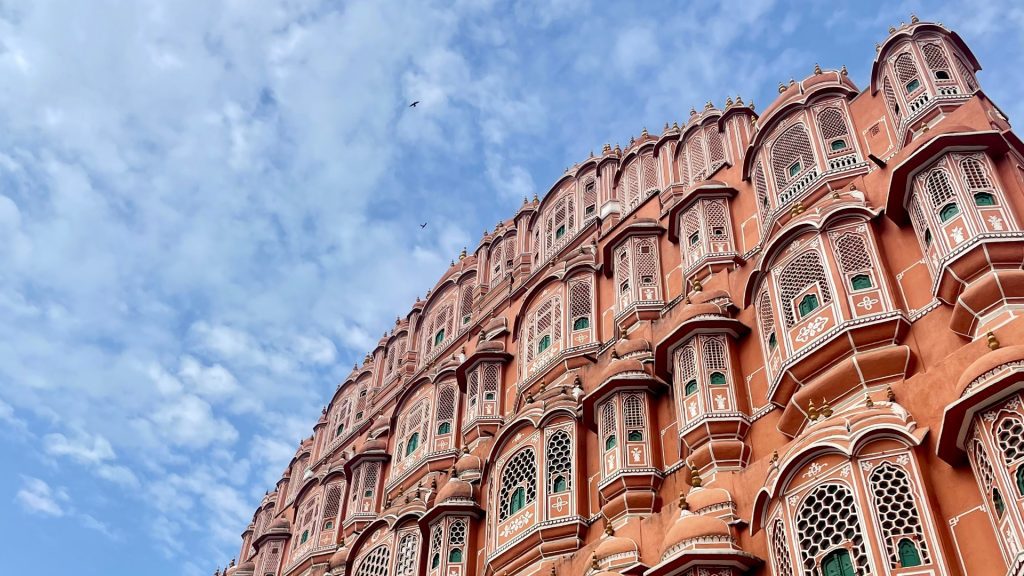
Jaipur was next, and I was excited to leave the reds and whites behind for hues of pink. Before you ask, no, Jaipur’s not going through a Barbie phase (although who could blame it if it was). The city was painted pink in 1876 in preparation for a visit from Albert Edward, the Prince of Wales, who later became King Edward VII.
Fast forward around 150 years and this friendly city continues to honour its pink heritage by incorporating pink materials in new construction.
We started our day with a (pink) bang at Hawa Mahal, constructed in 1799.
Shaped like a perfectly preserved honeycomb, this beautiful palace was once home to female royal family members so they could observe the happenings in the street below without being seen themselves. It was originally made with pink sandstone and then pink-washed before Prince Albert’s visit as a sign of Jaipur’s hospitality. With intricate details that combine aspects of both the Hindu Rajput and Islamic Mughal design styles, it’s easy to see how it’s fit for a queen (bee).
Coloured architecture isn’t the only thing that makes this city unique. From taking a ride with an all-female powered rickshaw company in search of street snacks to watching a Bollywood heartthrob defeat the bad guys in one of Jaipur’s oldest cinemas (my inner child was screaming), you’ll never get bored exploring the city’s fascinating culture and heritage. I certainly didn’t.
Jaisalmer



Next up on Rajasthan’s city colour wheel is Jaisalmer, or as it’s more affectionately known, the Golden City. I didn’t have any expectations of Jaisalmer. I’d never heard of it before travelling to India and if I’m being honest, I wasn’t all that excited for a two-night stop here.
As we drove along the dusty, desert road that would deliver us straight into the city’s heart, listening to our leader talk about Jaisalmer’s hilltop fort, snaking alleyways and intricately designed houses, my interest was piqued.
Like a lot of cities in Rajasthan, Jaisalmer has its own fort. While most forts have been turned into museums and listed as World Heritage sites, Jaisalmer’s stronghold stands out as the largest out of the few living forts left in the world. Around 3,000 people still live within the fort’s walls much like they would’ve back when it was built out of yellow sandstone in 1156.
Making space for wandering dogs and cows rummaging for food, our local leader led us through the fort’s maze of temples, boutique shops, old havelis and traditional hotels. When the heat became a little too much, we stopped at a café, cracked open a cold can of Sprite and admired the spectacular views across the whole city. Talk about a pinch-me moment.
While the fort may have been the star jewel in Jaisalmer’s crown, there were plenty of other places to explore. We visited the city’s garment district with its rich colours and textured fabrics and we enjoyed moments by Gardisar Lake, where a calm surface reflects the temples and shrines along the water’s edge.
Udaipur
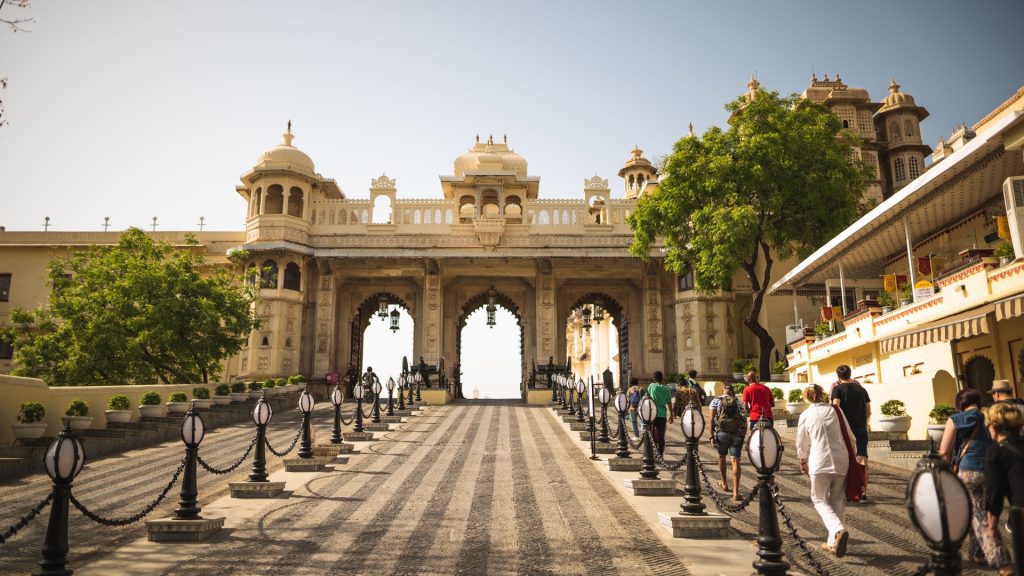
Picking my favourite city in Rajasthan is like loving one pet more than the other or choosing between tikka masala or lamb vindaloo for dinner. But if I had to pick one, it would be Udaipur (and tikka masala). If you’re also wondering whether it has its own colour, it does. Udaipur is known as the White City thanks to its pristinely preserved marble palaces.
The whole city is simply remarkable and I’d be lying if I said it didn’t take my breath away, but that also could’ve been the heat that hit me when I stepped off the bus (do you see a pattern here?). From laneways lined with stores selling aged leather and coffee shops where I easily could spend hours to the homemade lunch we had with a local family and the royal treasures and ancient murals of the City Palace, Udaipur is magical.
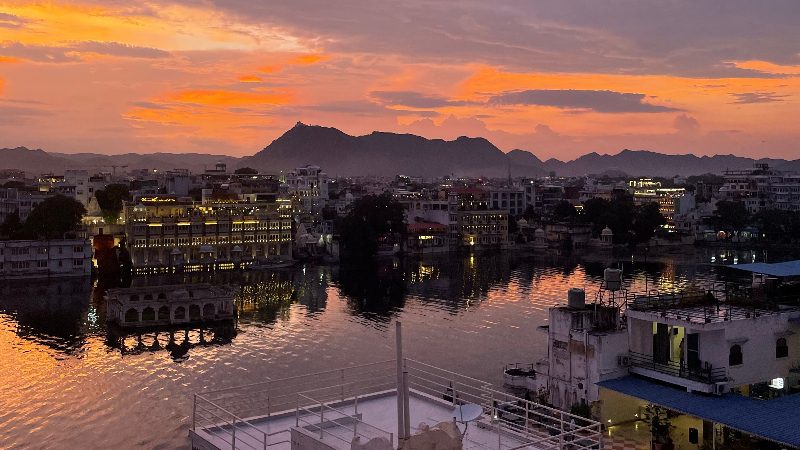
On our second last night as a group, our leader recommended a family-run rooftop restaurant on Lake Pichola’s edge. We got to the restaurant, took the rickety lift to the seventh floor and stepped out to see the prettiest sunset. Flush with reds, oranges, pinks and purples, the sky looked magnificent and was nature’s send-off to an unforgettable two weeks in India.
We drank, laughed and ate way too much spicy food as we all reflected on our favourite parts of the trip. As we exchanged numbers for a WhatsApp group we named Rajasthan Revellers, I knew we were leaving India with countless memories, about 1,278 photos and nine new friends.
We visited more destinations than I’ve shared, but these cities left an India-shaped mark on my heart. Yes, the journey was long at times (those eight-hour bus drives really called out the snorers in the group) and yes, it was too hot to function properly most days, but my god was it worth it.
Rajasthan is possibly the most daunting, astounding and unbelievable destination I’ve ever been to and while it didn’t get any less overwhelming the more we saw, I’d go back in a heartbeat.

